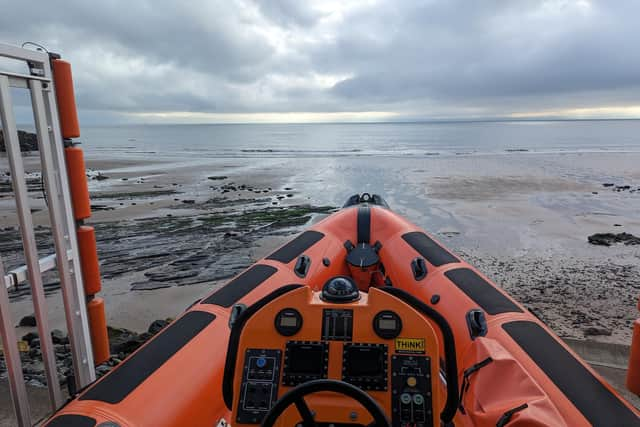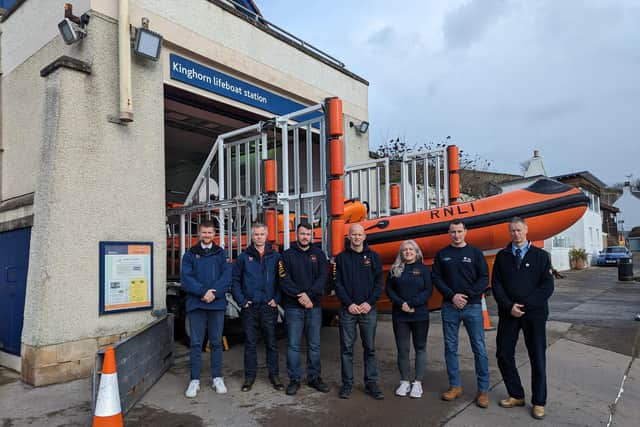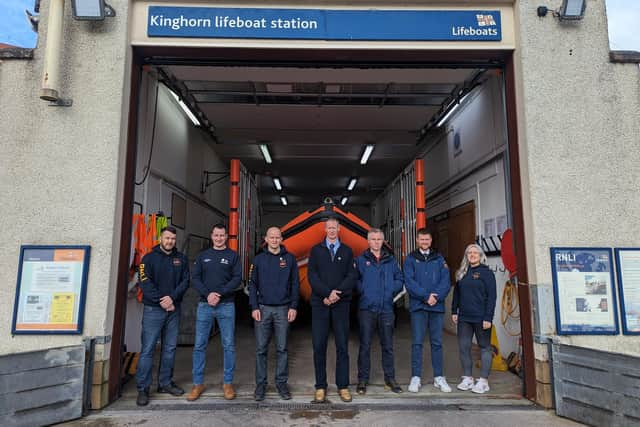RNLI 200: Kinghorn volunteer crews supporting Fife’s coastal communities
and live on Freeview channel 276
Formed in 1824 by Sir William Hillary, the charity estimates that it has rescued more than 144,000 lives over the years, including in excess of 12,000 rescues across the first and second world war.
The service was formed at a time when there were around 1,800 shipwrecks on the coast of Britain per year, and the risk was an accepted one. However, Sir Hillary looked towards a different outcome, he lobbied for the creation of a National Institution for the Preservation of Lives and Property from Shipwreck.
Advertisement
Hide AdAdvertisement
Hide AdWhilst he was originally met with resistance, he eventually won through and at an inaugural public meeting at City of London Tavern, Bishopsgate, the service was formed.


King George IV granted the Royal prefix to the charity Royal National Institution for the Preservation of Life from Shipwreck and in 1854, it would again be renamed Royal National Lifeboat Institution, as it is known today.
Sir Hillary predicted the service's longevity and widening scope, he said: “It only remains for me to express the heartfelt satisfaction … that this institution is now established on principles which will extend its beneficial effects to the most distant shores, and to generations yet unborn.”
The RNLI is now a common sight on the coast of the UK, including in Fife, and relies entirely on donations from the public to carry out its duties. The Kinghorn station first opened in 1965 and has launched nearly 2000 times, making it one of Scotland’s busiest. It now covers a 100 square mile area, extending across the Forth and into Edinburgh.
Advertisement
Hide AdAdvertisement
Hide AdDespite having a relatively high number of calls - around 4% of all Scotland’s total - the nature of the charity means that the Kinghorn station is run as a part time service, meaning the crew members at Kinghorn need to be ready to spring into action at a moment's notice.


Neil Chalmers, crew member, explains: “In a station like Kinghorn, there are no full time crew members, we’re all volunteers and we all have other jobs so the station can be quiet most days. Obviously once the pagers go, the crew turn up, the boat launches and the station is alive with things happening.”
And there is a much more reactive response to the question of how crew members stay sharp when the pager goes off: “Adrenaline,” Neil explains.
Kinghorn’s pagers went off 104 times in 2023. In the early days of the charity, the station would have been made up of people from a maritime background, but as industries have changed so have the backgrounds of those who have volunteered.
Advertisement
Hide AdAdvertisement
Hide AdMark Brown, helm, said highlighting this change is a positive one. “I think historically it used to be fishing families but now we get people from all walks of life which is a real positive,” he said.


One of those from a different background is Scott Glen. He moved to Kinghorn from Lanarkshire 12 years ago, opening a garage locally. Despite being firmly placed on dry land he was spotted by RNLI staff and asked to join due to his transferable skills.
He explained: “I didn’t actually know much about the RNLI and then Joanne, one of our deputy launch authorities, came up to the garage because they were really stuck for tractor drivers. She said ‘we’d like you to join the crew’. I’d never really thought about it before.
“Then that was it, I joined six years ago in April. I was a tractor driver for a couple of years and then I progressed on to the boat and now I do both.”
Advertisement
Hide AdAdvertisement
Hide AdSome things never change though. With a history of families serving together, Kinghorn has maintained that tradition through father and son duo Kerr and Graham Milne.
Kerr, now 27, has served with the RNLI since he was 17 years old. He convinced Graham to join as a tractor driver and the pair are now part of the same crew. With Kerr on the boat and Graham driving the tractor.
“My mum is thankful we’re both on the same crew, so it's only one week a month she gets disturbed rather than two!” Kerr said.
Mel McGarva joined the crew 13 years ago, having seen the boat going in and out of the station. Despite her lack of maritime experience, she decided to join the crew and is now a training helm.
Advertisement
Hide AdAdvertisement
Hide AdShe explained the importance of the service: “Without us there isn’t anything else. We do a range of rescues from broken down boats to casualties who have fallen on coastal paths, evacuations of cruise ships and without us there isn’t anybody else to do that, so how would those people then get help?”
For some people, like crew member Andrei Gardner, the charity is close to home, with his interests coming from being an active outdoor pursuits enthusiast. He said: “It was a natural thing to come along and volunteer. They’re the people who rescue you if you have a problem!”
The RNLI will hope to be around for another 200 years. Focusing on the community spirit fostered by the crews and by the crews and the people they serve. This was a common refrain from those at the Kinghorn station.
Kerr said: “It just gets everyone in the community involved and working together. We always have to be available if anyone needs our help.”
“It provides a massive lifeline to the sailing community,” Graham adds.